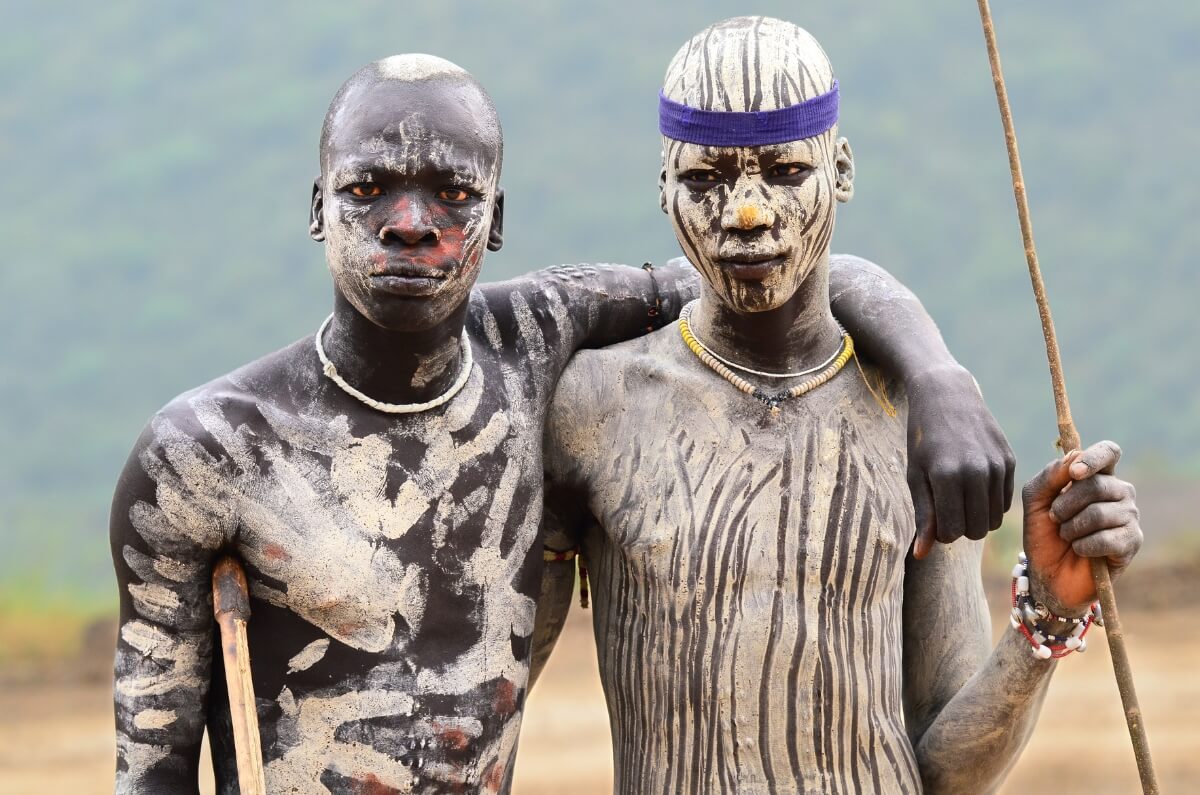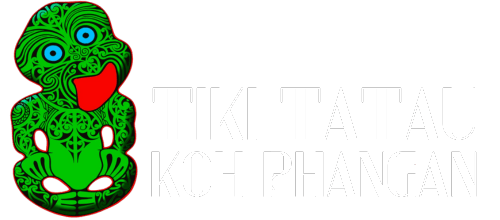
Tribal tattoos are one of the most enduring and powerful forms of body art, deeply rooted in history, culture, and symbolism. What began thousands of years ago as a sacred practice across various indigenous tribes around the world has evolved into a celebrated and dynamic art form embraced by people from all walks of life. Yet, despite their modern reinvention, tribal tattoos continue to carry the same reverence for identity, spirituality, and connection to ancestry that they did in ancient times.
In this article, we’ll explore the evolution of tribal tattoos, tracing their journey from the tribal communities where they were born to their place in contemporary tattoo culture today. Along the way, we’ll uncover the ancient traditions that gave rise to this timeless art form and examine how it has been reimagined by modern tattoo artists.
The Ancient Roots of Tribal Tattoos: More Than Just Ink
To fully appreciate how tribal tattoos have evolved, it’s important to first understand their origins. The practice of tattooing dates back thousands of years, with evidence of tattoos found on mummified bodies and ancient artifacts around the world. Each culture had its own distinct style of tattooing, and tribal tattoos were used not just for decoration, but for much deeper purposes.
In ancient societies, tattoos were often imbued with spiritual, protective, and social significance. They were symbols of identity, marking someone’s rank, accomplishments, or place within their community. Some of the oldest and most influential tribal tattooing traditions can be traced back to the Polynesians, Maori, Native Americans, and African tribes, each with its own unique techniques and meanings.
Polynesian Tattoos: Symbols of Strength and Protection
Polynesian tribal tattoos, known as tatau, hold some of the deepest meanings in tattoo history. Polynesian tattoos often covered large areas of the body, particularly the legs, arms, and torso. These intricate designs were filled with symbols that represented strength, protection, and ancestry, with each pattern carrying specific meanings related to the individual’s status, family history, or spiritual beliefs.
Tattooing was a sacred ritual in Polynesian culture, performed by highly skilled tattoo artists using tools made from bones and sharpened shells. The process was painful and often took many sessions to complete, but the tattoo was seen as a mark of endurance and strength. As a result, getting a Polynesian tattoo was considered a rite of passage, transforming the individual both physically and spiritually.
Maori Tattoos: The Sacred Art of Tā Moko
Among the Maori people of New Zealand, tattoos (or tā moko) were a critical aspect of personal identity and social status. Maori tattoos were unique in their use of curved, spiral-like patterns, often applied to the face, which was considered the most sacred part of the body. Each tattoo design was customized for the individual, incorporating symbols that represented their genealogy, achievements, and connection to the tribe.
The process of receiving a Maori tattoo was deeply spiritual. Tattooing tools, made from bone and chiseled to a sharp edge, were used to carve the intricate designs into the skin. Tā moko was not just a form of art; it was a way to connect with ancestors, preserve history, and maintain cultural continuity.
Native American Tattoos: Honoring Ancestry and Spirituality
Tattooing was also practiced by many Native American tribes, where tattoos were used to honor spiritual beliefs, commemorate battles, and mark important life events. Native American tattoos often depicted animals, nature, and celestial symbols, each with its own spiritual meaning. For example, a tattoo of an eagle could symbolize freedom or strength, while a bear might represent protection or courage.
In some tribes, tattoos were used to invoke protection from spirits or natural elements, acting as a form of spiritual armor. The practice of tattooing was often accompanied by rituals and prayers, underscoring the sacred nature of the art.
African Tribal Tattoos: Scarification and Identity
In many African cultures, tattooing took the form of scarification, where the skin was intentionally cut and raised to create unique patterns. These scars were a mark of identity, often signifying a person’s tribe, age group, or social standing. Scarification was particularly important in rites of passage ceremonies, where young men and women were initiated into adulthood.
African tribal tattoos also served as symbols of beauty and strength. The designs were often intricate and geometric, highlighting the skill of the artist and the cultural significance behind the patterns.
The Decline and Revival of Tribal Tattoos
As colonization spread across the globe, many indigenous tattooing practices were suppressed or outright banned. Missionaries and colonizers often viewed tribal tattoos as “savage” or “pagan” and worked to eliminate these cultural traditions. For many years, tattooing declined in these regions, and the rich history and significance of tribal tattoos were nearly lost.
However, in the mid-20th century, there was a resurgence of interest in tribal tattoos, particularly in Polynesia and New Zealand, where native communities began to reclaim and revitalize their traditional tattooing practices. Cultural revival movements sparked a renewed appreciation for tribal tattoos as a vital part of cultural identity and heritage. Artists returned to the traditional methods of tattooing, and many young people began getting tattoos to honor their ancestors and their connection to tribal traditions.
In the West, the 1970s and 1980s saw an explosion of interest in tribal tattoos as part of the larger tattoo renaissance. As tattooing became more popular, many people sought out tribal designs for their bold, graphic appearance. While some of these designs were inspired by traditional tribal tattoos, they were often adapted into modern interpretations, losing much of their original meaning in the process.
The Modern Art of Tribal Tattoos: A Blend of Tradition and Innovation
Today, tribal tattoos have taken on a new life, merging ancient symbolism with modern tattooing techniques and aesthetics. Many contemporary tattoo artists specialize in tribal-inspired designs, often blending traditional motifs with new, creative elements to create unique, personalized pieces of body art.
Neo-Tribal Tattoos: A Modern Take on Ancient Designs
One of the most significant developments in the evolution of tribal tattoos is the rise of neo-tribal tattoos. Neo-tribal designs borrow heavily from ancient tribal motifs, but they are often simplified or stylized to fit modern tastes. These tattoos feature bold, black lines and abstract shapes that resemble traditional tribal patterns, but they are not necessarily tied to any specific culture.
Neo-tribal tattoos have become incredibly popular in the West, where they are seen as striking and visually impactful designs. However, it’s important to approach these tattoos with respect for the cultures they draw inspiration from, ensuring that the designs are not used in ways that misrepresent or appropriate indigenous traditions.
Cultural Revival and Authentic Tribal Tattoos
At the same time, many tattoo enthusiasts and artists are turning to authentic tribal tattoos, seeking out traditional designs from indigenous cultures around the world. This movement is driven by a desire to reconnect with the spiritual and cultural roots of tattooing, as well as a respect for the original meanings behind tribal tattoos.
In places like Polynesia and New Zealand, tattoo artists have revived the ancient methods of tattooing, using hand-tapping or chiseling techniques passed down through generations. These tattoos carry the same spiritual weight they did centuries ago, with each design carefully chosen to reflect the wearer’s ancestry and identity.
The Spiritual Significance of Tribal Tattoos in the Modern World
While tribal tattoos have evolved in terms of style and technique, their spiritual significance remains largely unchanged. Whether you’re getting a traditional Maori tā moko or a modern neo-tribal piece, the process of receiving a tribal tattoo is still a deeply personal and transformative experience. For many, it represents a **
connection to one’s roots, a way to honor cultural traditions, or a symbolic journey of personal growth. Tribal tattoos continue to be powerful markers of identity, protection, and resilience, much like they were in ancient times.
Many tattoo enthusiasts today choose tribal designs not only for their aesthetic appeal but also for the profound meaning they carry. The process of getting a tribal tattoo—whether it’s done through modern machines or traditional hand-tapping methods—can be a spiritual act, allowing individuals to engage with their heritage or symbolize their life’s journey in a tangible, lasting way.
The Future of Tribal Tattoos: Bridging Tradition and Modernity
As we look to the future, the evolution of tribal tattoos is likely to continue blending ancient traditions with modern artistry. Cultural appreciation and respect for authenticity will play an increasingly important role in how tribal tattoos are approached, ensuring that the symbols and stories behind these designs are honored rather than commodified.
At the same time, the rise of neo-tribal styles will likely persist, offering a more universal and abstract take on the bold, graphic patterns that have come to define tribal tattoos in popular culture. The ability of tribal tattoos to evolve while maintaining their core spiritual and symbolic elements is what makes them a timeless and enduring art form.
As tattoo artists and wearers continue to explore the balance between cultural respect and artistic innovation, tribal tattoos will remain a deeply meaningful and visually striking form of body art—connecting us to the past, while evolving in the present.
FAQs
What is the difference between traditional and neo-tribal tattoos?
Traditional tribal tattoos are deeply tied to specific cultural practices, symbols, and spiritual meanings, often using ancient techniques. Neo-tribal tattoos, on the other hand, are modern interpretations that borrow elements from traditional tribal designs but are more abstract and universal in style.
Why are tribal tattoos so significant in indigenous cultures?
Tribal tattoos often represent a person’s identity, social status, spiritual beliefs, and connection to their ancestors. They serve as rites of passage, protection symbols, and ways to preserve history within the tribe.
How has modern technology impacted tribal tattooing?
Modern tattoo machines have made tribal tattooing faster and more accessible, but some artists still use traditional hand-tapping or chiseling methods to maintain the authenticity and spiritual connection of the practice.
Can anyone get a tribal tattoo, or is it reserved for specific cultures?
While anyone can get a tribal-inspired tattoo, it’s important to approach tribal tattoos with respect and understanding of the culture from which the design originates. Researching the meaning behind the symbols and consulting with an artist who specializes in authentic tribal work is highly recommended.
What should I consider when choosing a tribal tattoo design?
Consider the cultural significance of the design, its connection to your own heritage (if applicable), and the message or symbolism you want the tattoo to convey. Working with a tattoo artist who understands the cultural context is crucial.
How do I find a tattoo artist who specializes in tribal designs?
Look for artists who have experience in traditional tribal tattoos or neo-tribal styles. Review their portfolio to ensure they understand the cultural significance of the designs they’re working with and can execute them with precision and respect.
In conclusion, the evolution of tribal tattoos from ancient traditions to modern art reflects a rich and complex history. Tribal tattoos continue to hold deep significance today, bridging the gap between cultural heritage and contemporary self-expression. Whether rooted in cultural symbolism or reimagined in modern form, tribal tattoos remain an important and enduring form of body art that connects the wearer to something far greater than just ink on skin.
